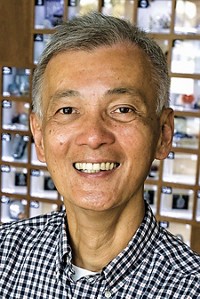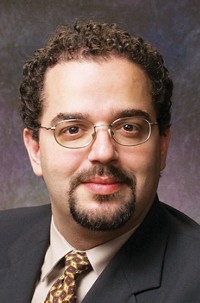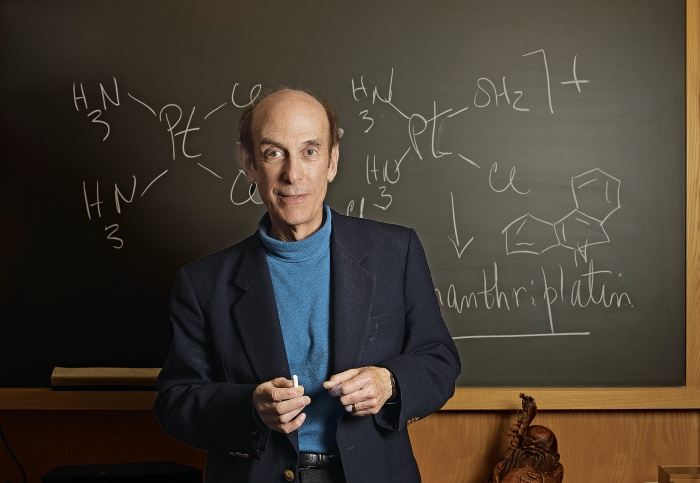Advertisement
Grab your lab coat. Let's get started
Welcome!
Welcome!
Create an account below to get 6 C&EN articles per month, receive newsletters and more - all free.
It seems this is your first time logging in online. Please enter the following information to continue.
As an ACS member you automatically get access to this site. All we need is few more details to create your reading experience.
Not you? Sign in with a different account.
Not you? Sign in with a different account.
ERROR 1
ERROR 1
ERROR 2
ERROR 2
ERROR 2
ERROR 2
ERROR 2
Password and Confirm password must match.
If you have an ACS member number, please enter it here so we can link this account to your membership. (optional)
ERROR 2
ACS values your privacy. By submitting your information, you are gaining access to C&EN and subscribing to our weekly newsletter. We use the information you provide to make your reading experience better, and we will never sell your data to third party members.
Synthesis
ACS Award in Inorganic Chemistry
January 2, 2006
| A version of this story appeared in
Volume 84, Issue 1
Sponsored by Aldrich Chemical
When Karl E. Wieghardt attends the 2006 American Chemical Society awards ceremony in Atlanta, he will be making a bit of personal history. "I will wear a tuxedo for the first time," he tells C&EN as he laughs with the distinctive staccato laughter that punctuates his conversations.
Wieghardt is the director of the Max Planck Institute for Bioinorganic Chemistry, MÜlheim an der Ruhr, Germany. His career is devoted to understanding the electronic structure of coordination compounds, especially those of biological relevance. Metalloproteins catalyzing reactions involving oxygen are his favorite. When the chemistry is elucidated, he removes the frills of biology and works with the essence of the chemistry to create small molecules that allow the same reactions to take place in test tubes at conditions as mild as those in cells.
One of his proudest achievements is a small molecule that does in a test tube what galactose oxidase does in a cell: It oxidizes an alcohol with oxygen in air to form an aldehyde and hydrogen peroxide. Organic chemists could not do that before, he says. "Once you elucidate the biochemistry, you can go back to the bench and, by exploiting the knowledge from biology, try to make a new small molecule that will do the job."
That seems simple, until it becomes clear that the chemistry is unprecedented. In galactose oxidase, the reactive center is copper(II) with one coordinated tyrosyl radical. "We could not find any coordinated tyrosyl radicals in the literature," he says. "So I said to a student, 'Why don't you make a few.' " He laughs. "It took us another 10 years to finally get them."
The copper compound has now been licensed to the specialty chemical company Degussa. "We hope that Degussa will turn it into something useful," Wieghardt says. "This is new chemistry. It will take a while for it to reach a production line."
Photosystem II is another metalloprotein system that Wieghardt has been studying. It oxidizes water and produces O2, electrons, and protons in leaves with the help of light, he explains. His attempts to reduce the metalloprotein to a small molecule, however, have been, he says, "a complete failure."
In science, though, even failures produce much knowledge. The efforts to design manganese compounds to mimic photosystem II expanded the knowledge of high-valent manganese compounds, Wieghardt explains. "In the 1980s, we were the first to develop the coordination chemistry of high-valent manganese compounds. At that time, textbooks said that manganese dioxide is the only stable Mn(IV) compound, which is not true. It was only a question of how to make them."
High-valent metals enable transformations in biology that still cannot be done in the lab. Another metal that Wieghardt has been investigating is the high-valent iron in methane monooxygenase, which uses oxygen in air to oxidize methane to methanol and water. A small-molecule mimic is not yet in sight, but his group is working on it.
Wieghardt, 63, received his Ph.D. in 1969 from the University of Heidelberg. His independent research career began with an assistant professorship at Heidelberg in 1974 followed by an associate professorship at the University of Hannover in 1975. In 1981, he joined Ruhr University, in Bochum, Germany, as a full professor, and in 1994 he moved to his current position.
When not busy dissecting metalloproteins, Wieghardt loves to listen to classical music and read history.
"The one other thing in my life that interests me more than anything else is our grandchild," Wieghardt tells C&EN. She is Chiara Wieghardt; she's one-and-half years old. Because of Chiara, he says, "I've learned that I am very emotional. I feel very attached to this little girl. I love her."
The award address will be presented before the Division of Inorganic Chemistry.—Maureen Rouhi






Join the conversation
Contact the reporter
Submit a Letter to the Editor for publication
Engage with us on Twitter